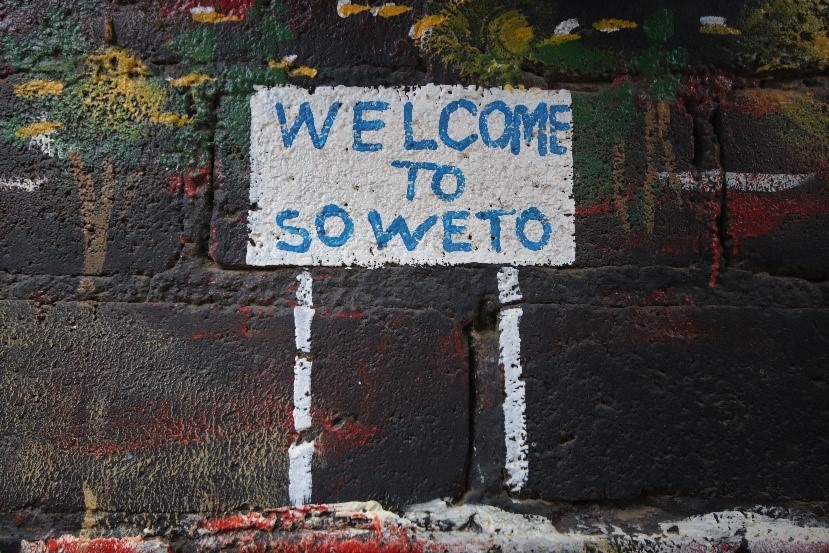
When we tell people that we have taken our children out of school for 5 months to travel through southern Africa, one of the first questions they ask is – what about school?
After spending 4 hours doing a Soweto cycling tour I know the answer – they will absolutely learn more by travelling than they can ever learn in the classroom … as of course will us adults too. What a wonderful experience the cycling tour was and so much more comfortable, fun and informative than I ever imagined it could be. And certainly not in any way voyeuristic.
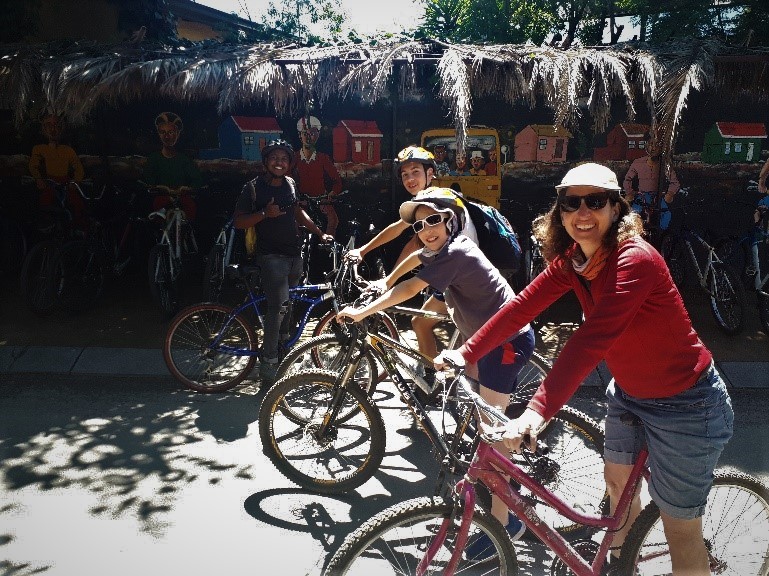
In his easy and relaxed manner, Mphondo our guide let us choose our bikes – the African bikes with their slow working brakes or the mountain bikes with gears that were more familiar. With helmets on and legs pumping we got up the first, and we were told, worst hill of the tour. At the top we had a panoramic view towards the Orlando Towers and Orlando Pirates soccer stadium. There we stood in the shade, met the other members of our tour from New Zealand, Belgium, Switzerland and Canberra , and started to learn about the history of Soweto, going back to the discovery of gold, the removal of all black people from Johannesburg and the creation of the SOuth WEstern TOwnships – Soweto as a segregated, disciplined source of labour for white wealth.
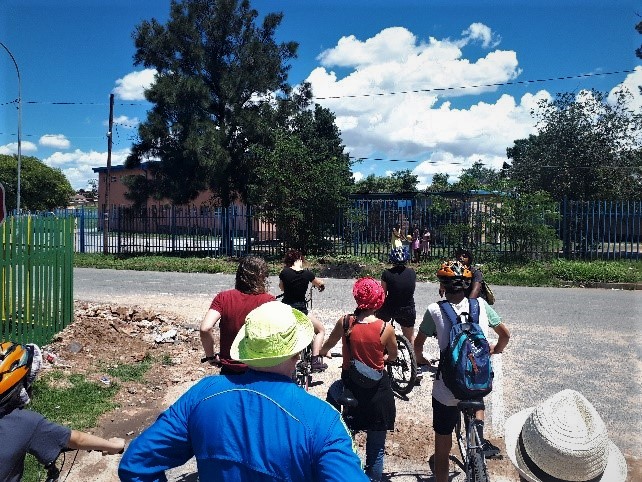
With great pride Mphondo shared these stories of unjust histories with the mighty struggles to challenge the inequalities, and deep respect for the Ubuntu and sharing of humanity that keeps peoples and communities so strong in this city of 3.5 million registered residents plus most likely another 1.5 million residents who are not formally counted. As we gaze at the view, people constantly walk past us and we learn that their greeting of Sanibonani – we see you, is met with our reply of Yebo – yes, we see you, we may not know you but we acknowledge our shared humanity. As we reply yebo we learn about the smoke stacks that have become such a famous landmark of Soweto. We learn that they were part of a coal powered power station – producing electricity for white people in Johannesburg whilst belching out toxic fumes which blew over Soweto for decades. The power station has since been decommissioned, Soweto now has power and you can bungee jump off a bridge that connects the two smoke stacks if it takes your fancy – how times marches on, how the sickening insanities of the past are met with inspiring changes for the better!
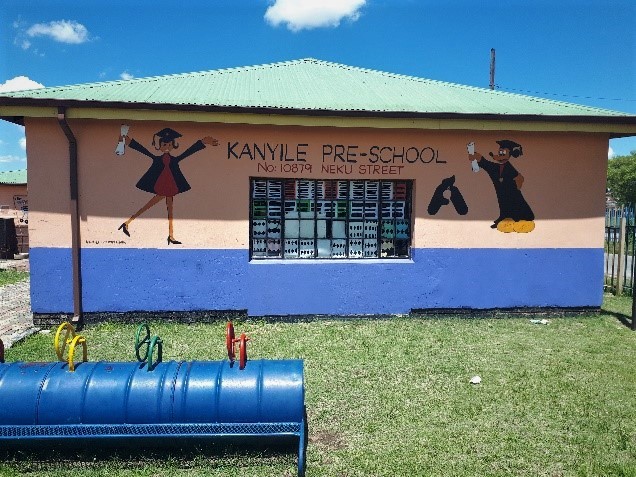
We then hit the road again on our Soweto cycling tour – nice and flat, past neat houses on tarred roads. We crossed a busy main road and pulled into the shade. Mphondo told us that the next part of Soweto would be more sensitive. that the kids love to high five us and we should high five away, but to be respectful of the children and if any want us to take photos to not take any individual children and rather take a selfy that is more interactive. Mphondo explained that the road separated what has historically been the family part of the township from the men’s hostels during apartheid where 10,000 men were crammed 16 to a 4 bedroom tiny house. Despite critical changes in terms of the removal of draconian apartheid laws which meant people couldn’t move around after 6pm and couldn’t leave their designated areas (hostel men could not move into family areas) this community area remains drastically underserviced – dirt roads, open sewerage, overcrowding, high unemployment and asbestos roofing everywhere.
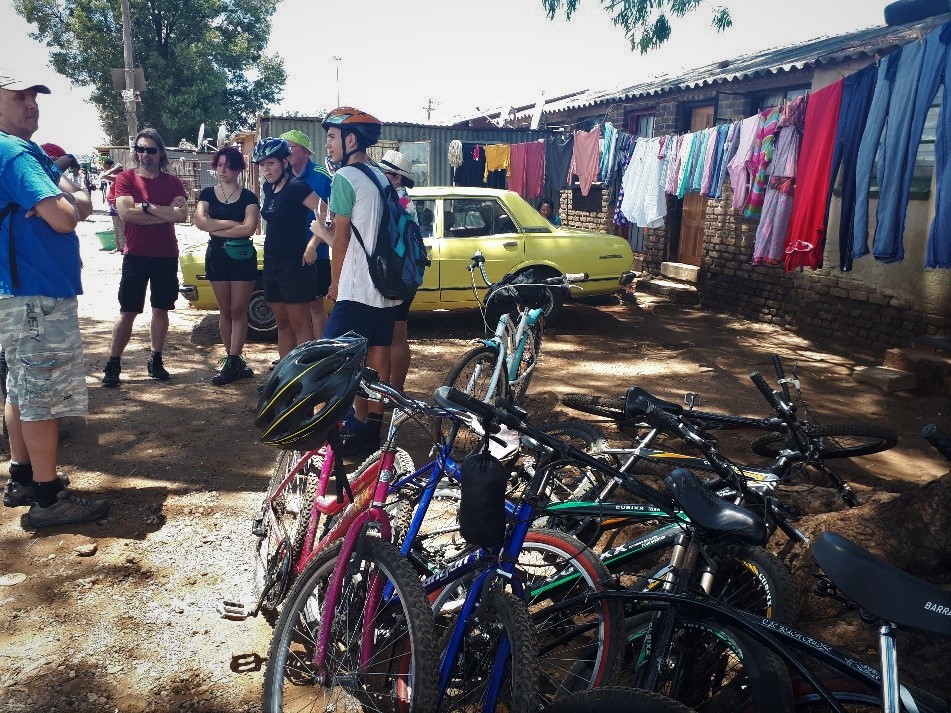
Lebo’s cycling tours take care to treat these areas with great respect, not as voyeurs but as people on the ground with other people and we really appreciated spending the majority of the tour there, not just passing through on the way to other destinations. And how amazingly friendly were every single person we passed. Our kids were in heaven waving and high fiving to everyone – I found the bike high fives more challenging due to my poor balance but no-one minded and everyone had a smile, a sanibonani, a how are you – a genuine welcome that I had not at all expected (indeed I had been so worried that I’d feel like a voyeuristic tourist on this tour).
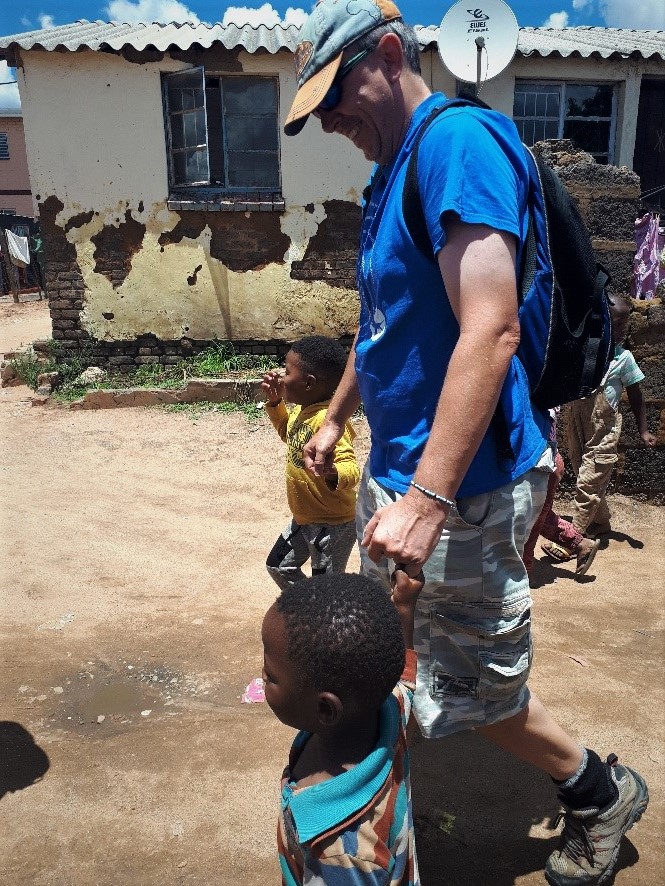
We were all aghast learning about the apartheid laws and terrible impacts on peoples’ lives – imagine working underground in the gold mines 6 days a week, living with 10,000 other men and only being able to visit your family and friends twice a year. Sadly, government efforts to renovate and build new housing have been met with corruption and while residents of the community – which is no longer male only, are sticking together to resist the corruption and remain united even while they continue to live in appalling conditions. After a walk through the alleyways and streets, surrounded by lots of gorgeous kids who made sure they held our hands and got lots of hugs, we stopped at a street stall to support the community as best we could. Here we were given the most amazingly delicious chargrilled beef heart and liver, with a fluffy mealie pap (maize meal) and periperi sauce – truly scrumptious.
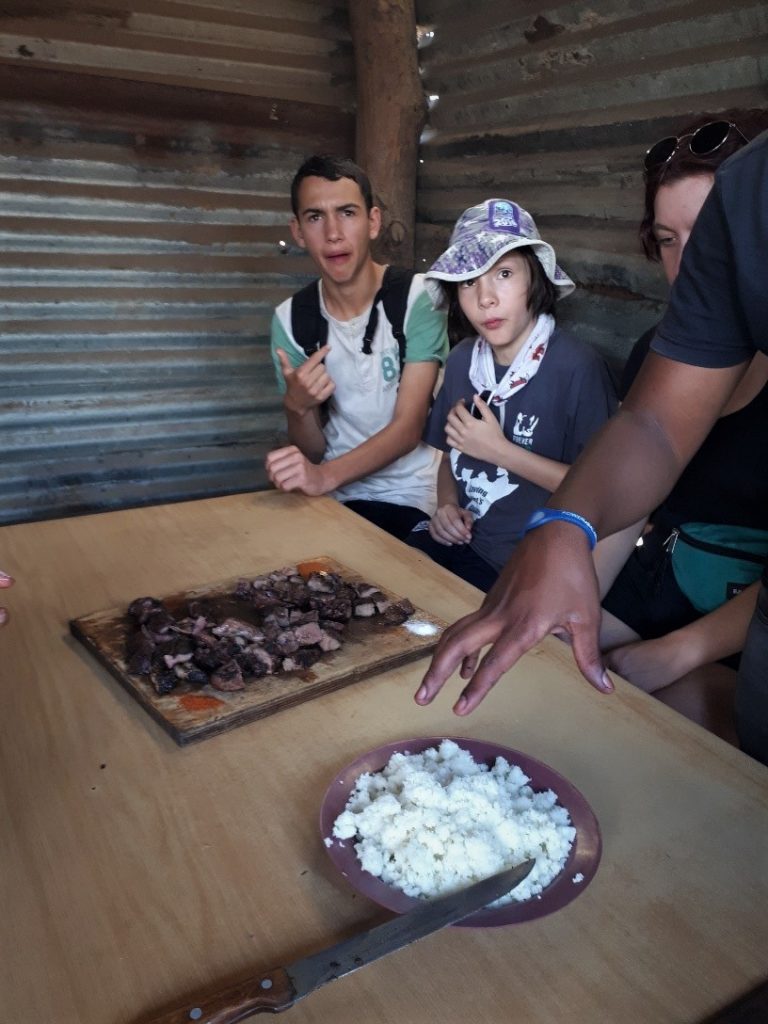
From here we cycled back over the main road and through the tarred streets to Meadowlands where we learnt more about the insanity of apartheid and the efforts the white government went to create categories, assign people to them and ensure they were not crossed. As we were about to head off Chris realised he had a puncture. Nothing a call back to Lebo’s couldn’t fix and as we slowly walked and cycled down the road along came one of Lebo’s tuktuk’s with a new bike for Chris to ride.
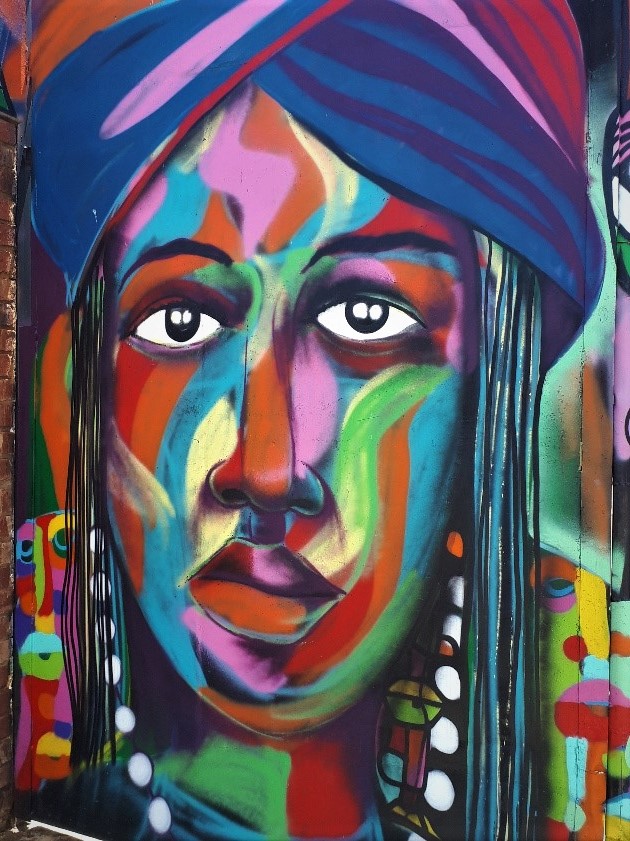
Our next destination on our Soweto cycling tour was the Hector Peterson Memorial, an open square where a large black and white photograph grabs your attention and draws you into the horrific time when high school children resisted efforts by the apartheid government to teach them in a language they didn’t speak (Afrikaans) and took to the streets armed with stones to say no. My kids, who’d so recently taken part in the school strike against climate change rallies in Sydney, listened intently as Mphondo explained how the students veered away from the armed government forces only to be confronted by them once again, shouting at them in a language they did not understand and then started shooting, killing 12 year old Hector, a boy just one year older than my youngest son Cadan as he watched from the sidelines. So many young people were killed afterwards, and the square, museum and Youth Day every single year are constant reminders of their bravery and sacrifice.
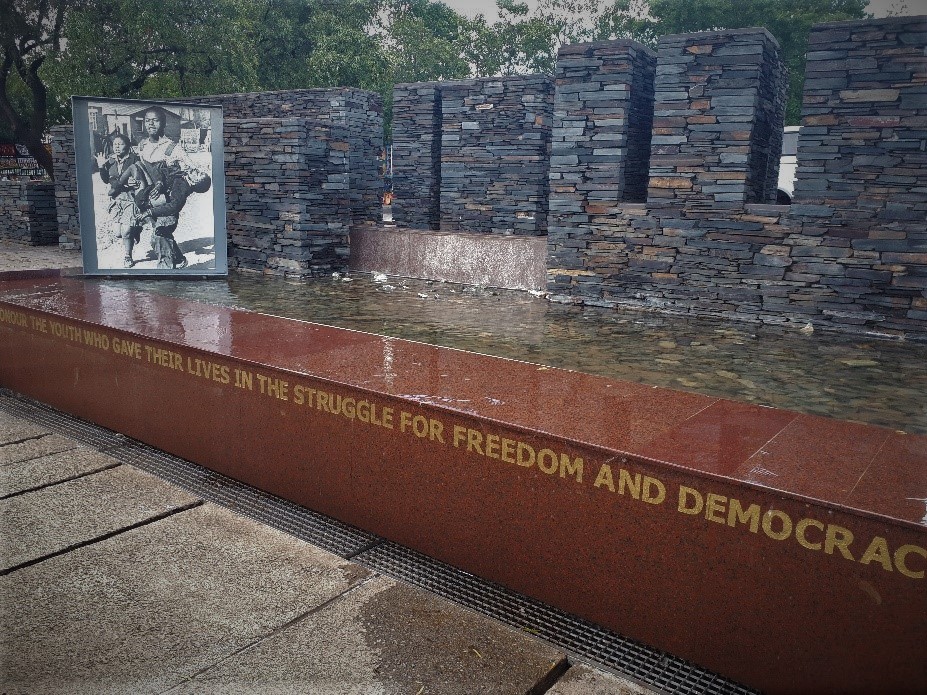
After a drink and loo stop we rode in careful single file on busier roads to the last stop on our Soweto cycling tour – Vilakazi Street to visit the house where Nelson Mandela lived, to learn more about this singularly incredible man. Really there are no words to describe what he achieved, but of course he did this together with so many other amazing people, known and unknown, including Desmond Tutu whose house is one block further down the street.
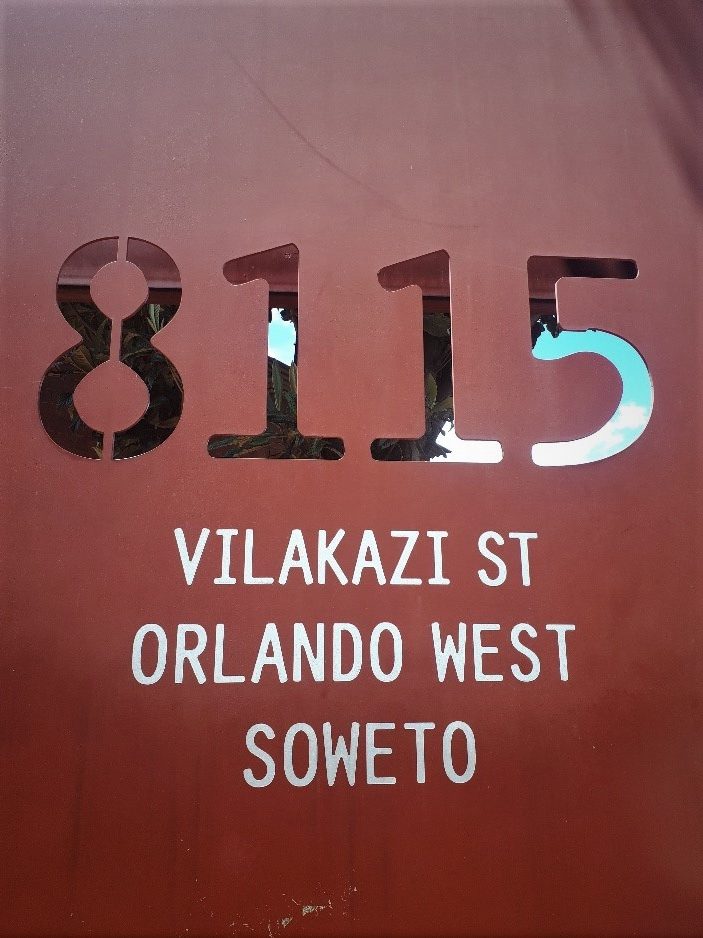
To be able to cycle through this part of Soweto, to have this insight into life and history, to listen to Mphondo and see what can, and what doesn’t always, change has been a simply incredible privilege and we want to thank Lebo’s for creating the tour with such care and the amazingly welcoming people of Soweto for letting us come and visit. Learning in this way will certainly stay with all of us forever.
Lebo offers:
- 2 hour bicycle and tuk-tuk tours
- 4 hour bicycle and tuk-tuk tours
- Food tour
- 3 hour walking tour
- Full day tour
- Lebo’s also offers superb accommodation in Lebo’s Backpackers – including double room with en-suite. Modern décor, so comfortable and lovely, lush garden with lots of comfortable nooks and crannies to hang out in.
